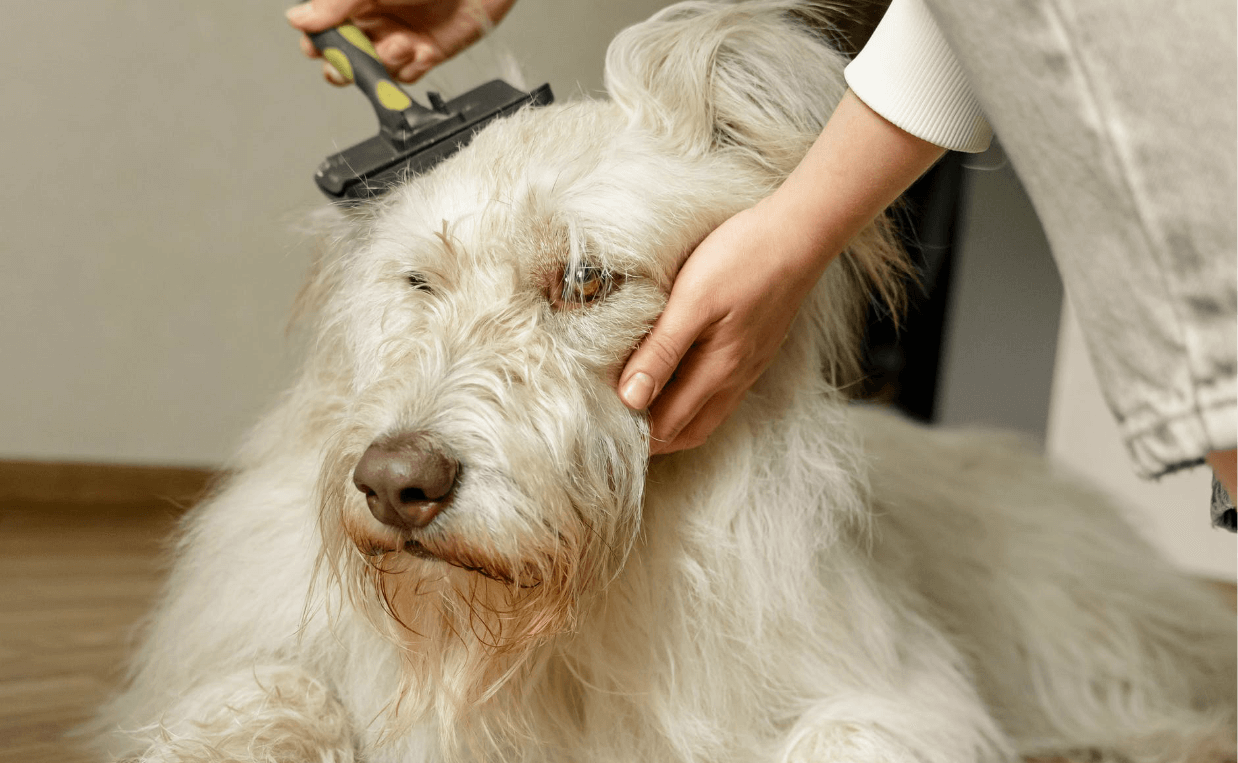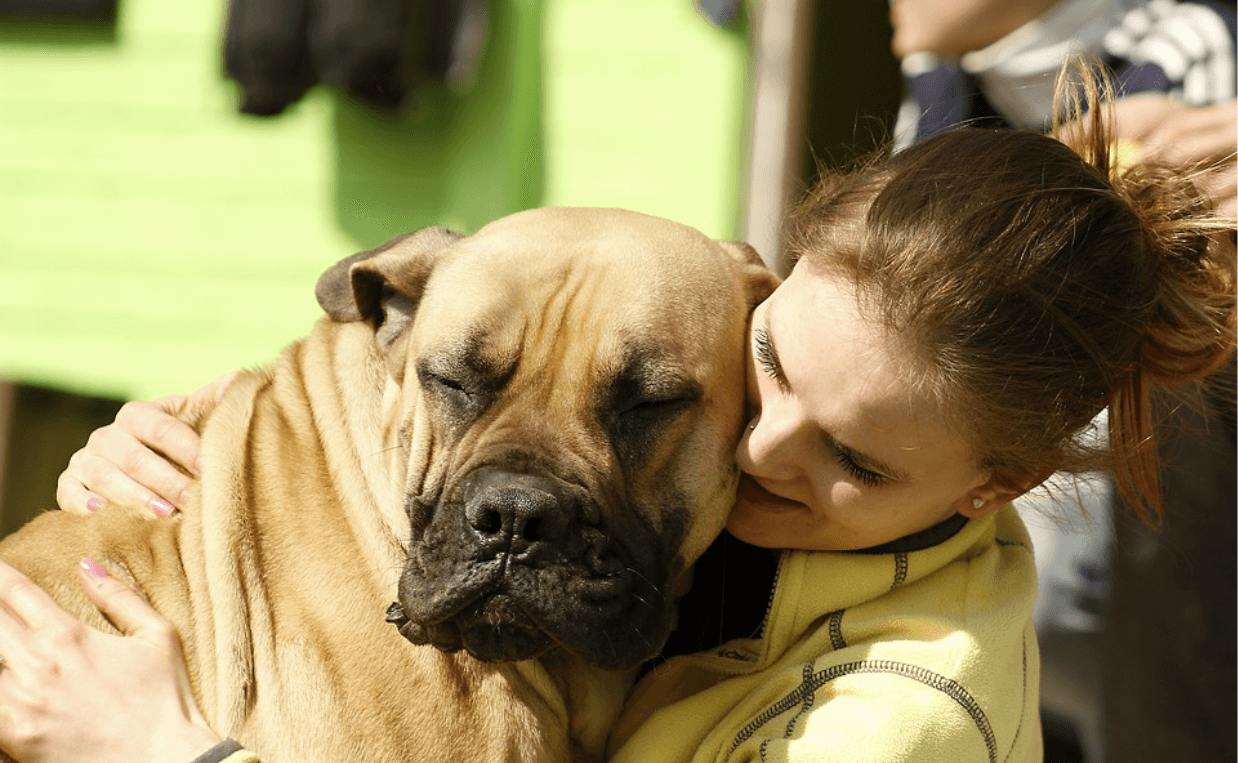
No one enjoys feeling stressed – including your dog. But unfortunately, your pooch can’t always tell you he or she is stressed, so he or she may be suffering in silence.
Canine stress and anxiety may seem harmless, but they can cause serious health issues and behavior problems if left unchecked. So, it’s important to treat your stressed out pup promptly, to ensure he or she remains healthy and happy.
Why You Should Address Your Dog’s Stress and Anxiety
Dogs experience physiological issues when they are stressed. Though your dog may not look very bothered on the outside, he or she may be having physical responses, such as:
- Elevated heart and breathing rate
- Diverting glucose and protein from essential systems to fuel the body’s muscles in preparation for a fight-or-flight response
- Poor digestion
- Increased urination and/or defecation (possibly diarrhea)
- Appetite changes
- Dilated pupils
- Lowered immunity
- Shaking
- Excessive drooling or mouth foaming
In reality, stress can take a serious toll on your dog. For this reason, it is important for you to recognize the signs of stress so you can prevent long-term discomfort and health issues.

What Causes Stress in Dogs?
Many things can trigger stress in dogs, including:
- Loud noises such as a thunderstorm, fireworks or construction.
- Living situation changes. Moving can be difficult for dogs, as can smaller changes like rearranging your home or buying new furniture.
- A new baby, pet or spouse can throw off your household rhythm and make your dog feel uncertain about his or her role in the pack.
- Using harsh punishment can cause stress and behavior regression.
- Being left alone can cause stress for many dogs. It doesn’t have to be a long period of time, either. Some pups feel the need to follow their parents around or they feel anxious.
- No outlet for normal dog behaviors. Dogs need to be allowed to be a dog. For example, most dogs like to dig and need to release their instinctual behavior somehow. It may not be your flowerbed, but a sandbox is a great idea.
- Invasion of personal space. Some dogs aren’t happy to share their space with other dogs or humans. They need their own space or they may exhibit signs of stress.
- Changes in routine. Dogs thrive on routine. It can be stressful for your dog if you substantially change your routine, such as a new work schedule or a different walk or meal time.
- Relationship conflicts. Dogs are sensitive when it comes to relationships. An example of this would be arguing within the household.

Signs of Canine Stress
While your dog can’t tell you directly what is causing him or her stress, he or she can show how he or she is feeling through body language and behavior.
Here are common signs your dog may be stressed or anxious.
- Unable to settle down or relax
- Pacing
- Shaking
- Curling the lips
- Flattened or rigid ears
- Hiding
- Sweaty paws
- Strange or frequent vocalizations, such as nuisance barking, growling and howling
- Tucked tail
- Destructive chewing
- Scratching
- Seeking attention
- Hypervigilance
- Drooling
- Self-calming behaviors, such as sneezing, lip-licking and excessive yawning
- Intense displacement behaviors, such as incessantly grooming him or herself
- Bathroom issues
- Sudden shedding
- Vomiting
- Learned helplessness, possibly a response to abuse or harsh correction tactics
- Aggression; a sudden change in your dog’s temperament
- Eye changes, including “whale” eyes. Whale eyes occur when the whites of your dog’s eyes are visible. This is a sign your dog is fearful, so proceed with caution to avoid a bite.
- Change in sleep habits
- Low energy
- Withdrawal from interaction
- Lack of appetite

How to Help Relieve Your Dog’s Stress
- Visit your veterinarian. An underlying medical condition can cause anxiety and stress. Have your dog examined to rule out any health issues.
- If your dog is stressed due to changes in the household, you may need to help your dog adjust using a training technique called desensitization. This technique helps your dog overcome his or her fear of the new change.
- Counter-conditioning. This is another dog training technique used to help your dog associate something positive – such as a high-value treat – with the situation causing stress for your dog.
- Keep track of your dog’s behaviors. It can be challenging to correctly identify what is causing your dog stress. Keeping a behavior journal can help you figure out what is going on. Tracking the time, your dog’s actions and what has occurred right before the stressful behavior can help narrow down the possibilities. For example, it might be your lawn service causing your dog to exhibit stressful behaviors but you might not recognize it unless you keep a behavior journal.
- Remarkably, massage can help your dog relax. The act of touch can be soothing, especially if your dog is having a hard time settling down. However, if your dog is showing aggression, massage is not the right approach.
- Quality time. Dogs need time one-on-one with their family. Try incorporating an extra daily walk or sign up for a dog sport you both might enjoy.
- Some dogs enjoy being brushed and groomed. However, do not force grooming on a dog who dislikes it as it can worsen his or her anxiety.
- Dog calming pheromones. Dog appeasing pheromones are chemicals that mimic the way dogs communicate with one another through scent. The scents can have a calming effect on stressed dogs.
- Some dogs feel safer and calmer in their crate sanctuary. Not only does providing a crate help anxious dogs feel safe and relaxed, but it also keeps him or her safe and out of trouble when you’re not available.
- Mental stimulation. Boredom can exacerbate problems like barking, destruction and anxiety. Playing games with your dog and offering anxiety-relieving toys can help your dog experience less stress.
- Regular exercise. Providing regular exercise can give your dog the physical outlet he or she needs to relieve stress.
- Tight-fitting shirt. Commonly called Thundershirts because of their use during thunderstorms, tight-fitting shirts can ease stress. These garments fit snugly to give your dog a sense of comfort. You can purchase one or easily make your own Thundershirt at home.
- Some dogs may require medication to soothe their anxiety. Anxiety medication, including prescription and over-the-counter options, should be discussed with your veterinarian before use.
- White noise or relaxing music. In most cases, white noise does soothe dogs. For many dogs, white noise sound machines provide background noise to help them relieve stress. The noise machine can serve a similar purpose as playing relaxing music.

Final Thoughts
Remember stress is not always bad. Fear is a stress-related instinctual emotion needed to avoid potentially dangerous situations. So, stress is actually a protector. Regardless, stress is part of everyday life for our dogs, so we need to learn how to help them relieve their stress so they can live a happy, relaxed life.
How do you help your dog relieve his or her stress? Please share your experience in the comments below…

 Why Do Dogs Pant: Unraveling the Mystery Behind This Canine Behavior
Why Do Dogs Pant: Unraveling the Mystery Behind This Canine Behavior 10 Tips to Help Calm Your Dog Before a Vet Visit
10 Tips to Help Calm Your Dog Before a Vet Visit 10 Tips to Help Your Dog Be a Good Neighbor
10 Tips to Help Your Dog Be a Good Neighbor Does Your Dog Have Back to School Separation Anxiety?
Does Your Dog Have Back to School Separation Anxiety? How to Help a Grieving Dog
How to Help a Grieving Dog






Leave a Reply